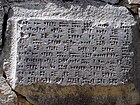
Dale Chihuly is an American glass artist and entrepreneur. He is well known in the field of blown glass, "moving it into the realm of large-scale sculpture".
Yerevan is made up of a multitude of parks, gardens, statues, buildings and other monuments. This article presents some of the principal monuments of Yerevan.
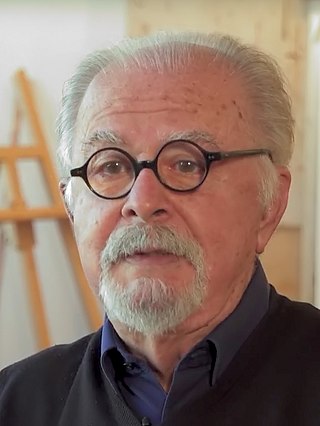
Fernando Botero Angulo was a Colombian figurative artist and sculptor. His signature style, also known as "Boterismo", depicts people and figures in large, exaggerated volume, which can represent political criticism or humor, depending on the piece. He was considered the most recognized and quoted artist from Latin America in his lifetime, and his art can be found in highly visible places around the world, such as Park Avenue in New York City and the Champs-Élysées in Paris, at different times.

Jaume Plensa i Suñé is a Spanish visual artist, sculptor, designer and engraver. He has also created opera sets, video projections and acoustic installations.

The deCordova Sculpture Park and Museum is a sculpture park and contemporary art museum on the southern shore of Flint's Pond in Lincoln, Massachusetts, 20 miles northwest of Boston. It was established in 1950, and is the largest park of its kind in New England, encompassing 30 acres.

Gerard Leon Cafesjian was a businessman and philanthropist who founded the Cafesjian Family Foundation (CFF), the Cafesjian Museum Foundation (CMF) and the Cafesjian Center for the Arts.

Armenian architecture comprises architectural works with an aesthetic or historical connection to the Armenian people. It is difficult to situate this architectural style within precise geographical or chronological limits, but many of its monuments were created in the regions of historical Armenia, the Armenian Highlands. The greatest achievement of Armenian architecture is generally agreed to be its medieval churches and seventh century churches, though there are different opinions precisely in which respects.

Republic Square is the central town square in Yerevan, the capital of Armenia. It consists of two sections: an oval roundabout and a trapezoid-shaped section which contains a pool with musical fountains. The square is surrounded by five major buildings built in pink and yellow tuff in the neoclassical style with extensive use of Armenian motifs. This architectural ensemble includes the Government House, the History Museum and the National Gallery, Armenia Marriott Hotel and two buildings that formerly housed the ministries of Foreign Affairs and Transport and Communications. The square was originally designed by Alexander Tamanian in 1924. The construction of most of the buildings was completed by the 1950s; the last building—the National Gallery—was completed in 1977.

Stanislav Libenský and Jaroslava Brychtová were Czech contemporary artists. Their works are included in many major modern art collections, such as the Metropolitan Museum of Art and the Victoria & Albert Museum.
Yerevan is made up of a multitude of parks, gardens, statues, buildings and other monuments. This article presents some of the principal monuments of Yerevan.

Boeing Galleries are a pair of outdoor exhibition spaces within Millennium Park in the Loop community area of Chicago in Cook County, Illinois, United States. The spaces are located along the south and north mid-level terraces, above and east of Wrigley Square and the Crown Fountain. In a conference at the Chicago Cultural Center, Boeing President and Chief Executive Officer James Bell to Chicago Mayor Richard M. Daley announced Boeing would make a $5 million grant to fund both the construction of and an endowment for the space.

Kentron, is one of the 12 districts of Yerevan, the capital of Armenia. It comprises the downtown, the commercial centre of the city. As of the 2022 census, the district has a population of 119,841.

The Cafesjian Center for the Arts is an art museum in Yerevan, Armenia. It is located at the central Kentron District, in and around the Yerevan Cascade which is a complex of massive staircase with fountains, ascending up from the Tamanyan Street gardens and pedestrian zone.
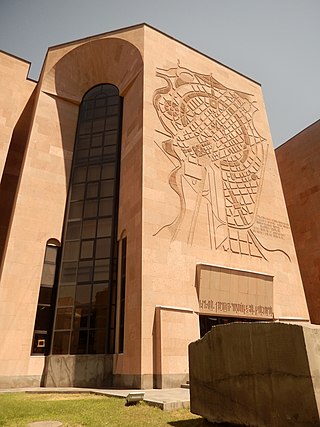
The Yerevan History Museum is the history museum of Yerevan, the capital city of Armenia. The museum was founded in 1931 as the Communal Museum. Currently, the museum is located in a building attached to the Yerevan City Hall. The architect of the building was Jim Torosyan.

Yervand "Kochar" Kocharyan, also known as Ervand Kochar was a prominent sculptor and modern artist of the twentieth century and a founder of Painting in Space art movement. The Ervand Kochar Museum is located in Yerevan, Armenia and showcases much of his work.
Murad Hasratyan is an Armenian architectural historian.

Tamanyan Street is a pedestrian street in Yerevan, Armenia. It is located in the central Kentron district and links the Yerevan Cascade at the north with the Moscow street at the south. It has a length of 200 metres (660 ft) and a width of 55 metres (180 ft). It is named after the main architect of Yerevan Alexander Tamanian. Tamanian's statue stands at the entrance to the street since 1974.
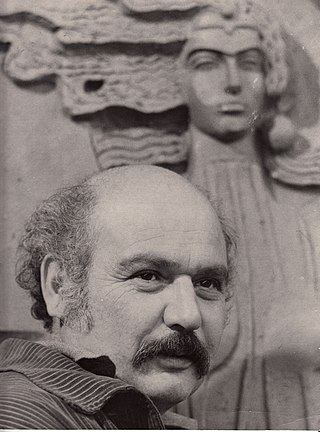
Ara Harutyunyan was an Armenian monumental sculptor, graphic artist, People's Artist of Armenia, corresponding member of Academy of Fine Arts of USSR and Russian Academy of Arts, professor.
Grigor Khanjyan was a Soviet and Armenian artist, painter, and illustrator. He is most notable for his illustrations of historical novels and poems, and murals and tapestries on historical topics. In 1983 Khanjyan was appointed a member of the highest order of chivalry in Soviet art – the "People's Artist of Soviet Union".
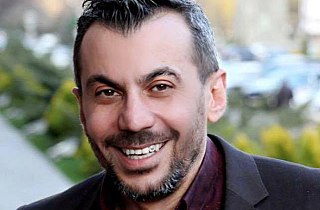
Arman Nur is an Armenian designer, jeweler, sculptor, and painter. In 2012, Nur was awarded the Armenian Ministry of Culture's Gold Medal, and in 2013, he received the President of Armenia's Movses Khorenatsi medal.
































